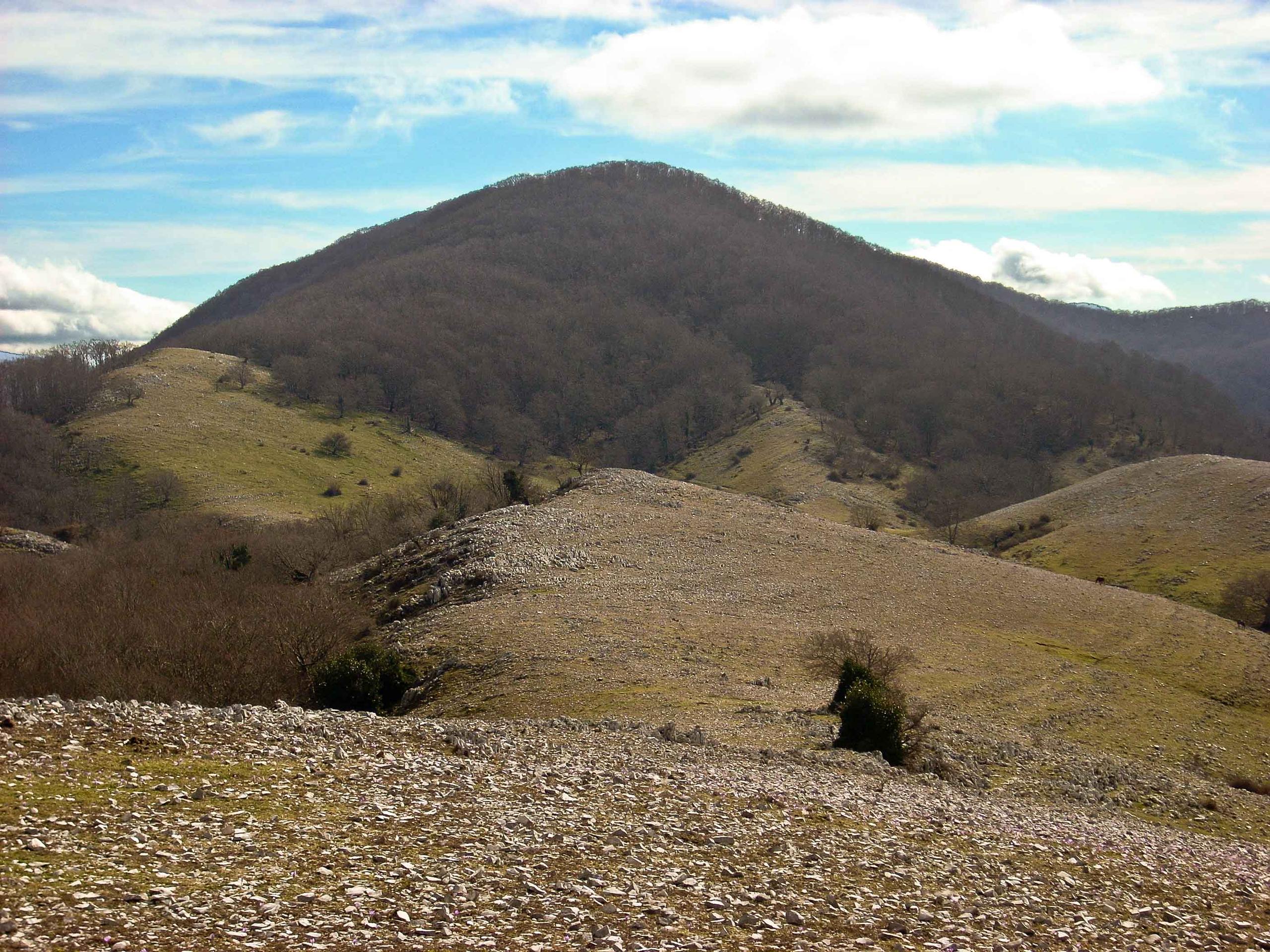Geographical information
The Municipality of Cori is located in the territory south of Rome, between the volcanic area of the Alban Hills and the Lepini Mountains. It is an area characterized by a typically hilly orography, which dominates the vast expanse of the Pontine Plain to the sea; a territory of ancient settlement, rich in history and long-term human stratification, placed at the limit of that vast area of swamps that only during the fascist era was reclaimed and progressively anthropized.
The Lepini Mountains are part of the limestone ridge that, developing in the direction of the Apennines (north-south), separates the Pontine Plain from the Latin Valley. These reliefs are composed of a sequence of limestone, dolomite limestone and dolomite. Overall, the lepinus relief, if observed from the Pontine Plain, assumes the appearance of a high and steep bastion rich in karst forms: dolines are observed, especially in the summit plains, while underground karst forms are numerous a little everywhere (there are horizontal cavities and a few more vertical ones). The western part of the territory, on the other hand, looks like a hilly area characterized by tufa hills stretched in almost north-south direction, with flat summit surface and maximum altitudes of just over 200 meters above sea level, separated by deep river incisions. Remarkable is Giulianello Lake, a small reservoir inserted in a context of considerable environmental value and now finally protected (Natural Monument Giulianello Lake); it is a natural lake artificially controlled by a system of drainage tunnels partly still preserved and immersed in a context of arable land and cork truly unique.
On the most fertile soils there are arable land, vineyards, olive groves and kiwi tent crops. Worthy of mention is the cultivation of some varieties of native vines: among others, Nero Buono, Bellone and Arciprete from which are obtained wines of now recognized quality and fame. Along the poorer limestone cliffs and with greater restrictions of use, the dominant feature of the crops and the landscape is the olive tree that, rising in altitude, leaves room for the pastures of mountain livestock farms. The most common olive varieties are Itrana, Leccio, Frantoio and, to a lesser extent, Moraiola, Perentolino and Carboncello from which are obtained both oil and table olives. Among the olive groves and vineyards you can often find the remains of villas of Roman times, terraces in polygonal work, tunnels dug into the tuff, ruins of medieval abbeys, dry walls, charcoal burners and farmhouses, which infuse identity, culture and history to this territory.
Along the lepino pedimount there is a sub-steppe vegetation dominated by ampelodesma and iparrenia with the presence of phylline, viburnum, olive, terebinth and myrtle. These open and grazed prairies include the fox, wild boar, weasel, hedgehog, badger and hare. Also rich is the birdlife, which exploits the numerous limestone walls to nest: unmistakable are the silhouettes of the short-toed eagle and buzzard. The same goes for migratory species that find here an ideal environment for resting. In particular, among these are the woodcock, the thrush and the wood pigeon, species unfortunately subject to an now unsustainable hunting pressure.
At progressively higher altitudes you will first encounter the woods dominated by holm oak, rich in a cortege of Mediterranean plants. Going up again you pass inside the mixed forests of evergreens and deciduous dominated by holm oak, downy oak and hornbeam, with more rare presence of orniello, maple, mountain maple and hazelnut. Where the soils are acidic, due to the presence of pyroclastic cover, the man has planted the chestnut, replacing the original oak forest. From the thousand meters the beech replaces the oak. Worthy of mention is the flowering of orchids in mountain pastures. In the same zones, rich of small and medium hypogeal cavities, you can meet at dusk the greater vespertilio, the greater rhino and the dwarf bat, but also raptors such as the buzzard, the short-toed, the goshawk and the kestrel.
Bibliografia: P. Bono, A. Malatesta, F. Zarlenga, Evoluzione della Pianura Pontina, in Guide geologiche regionali. 5. Lazio, Milano 1993

